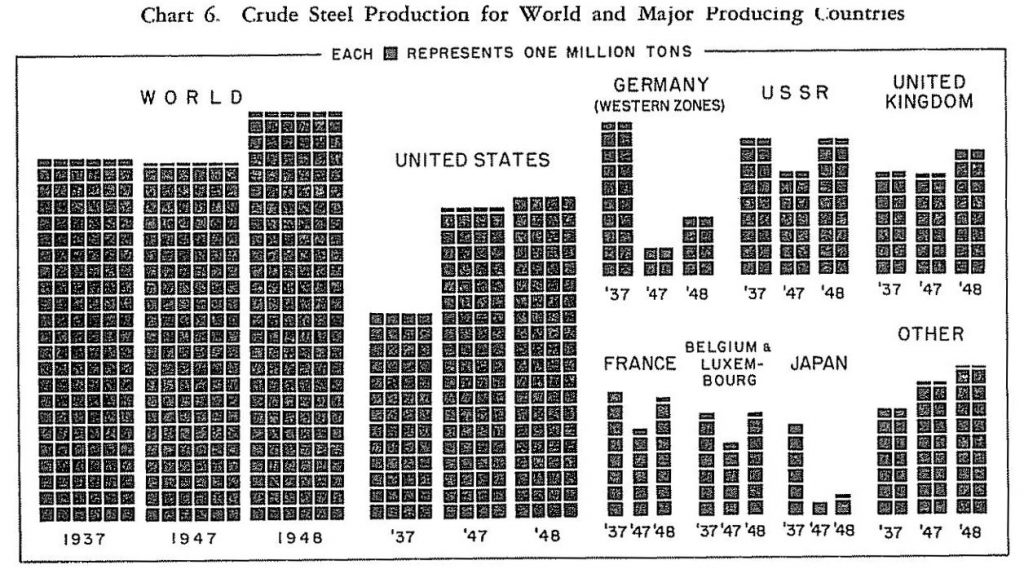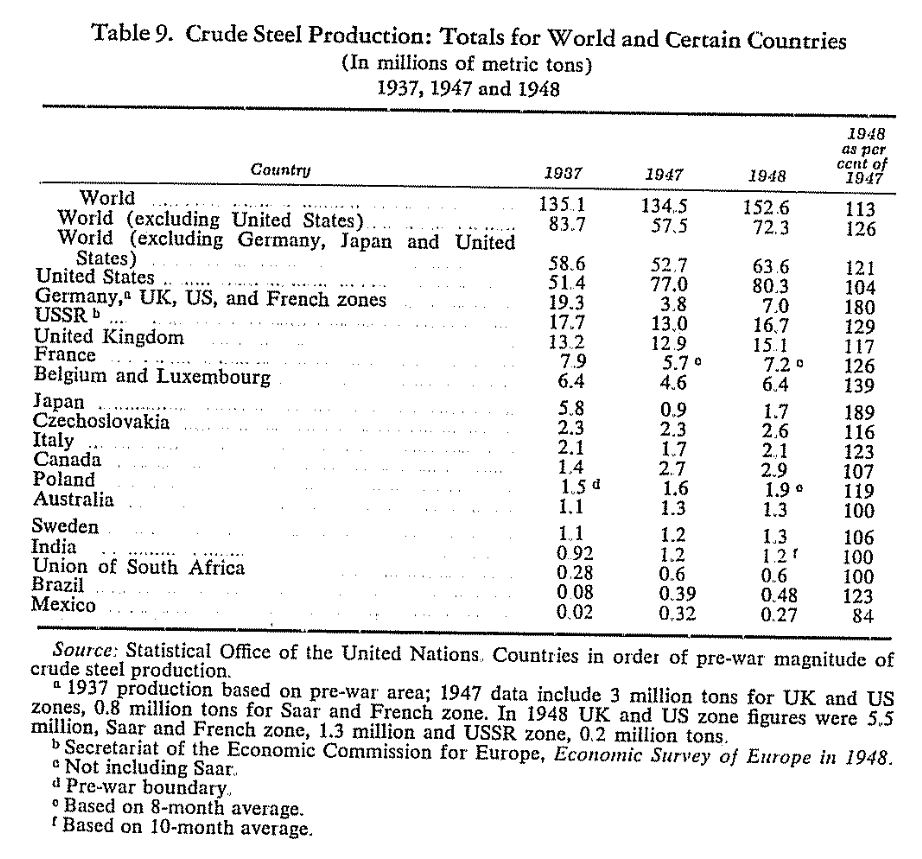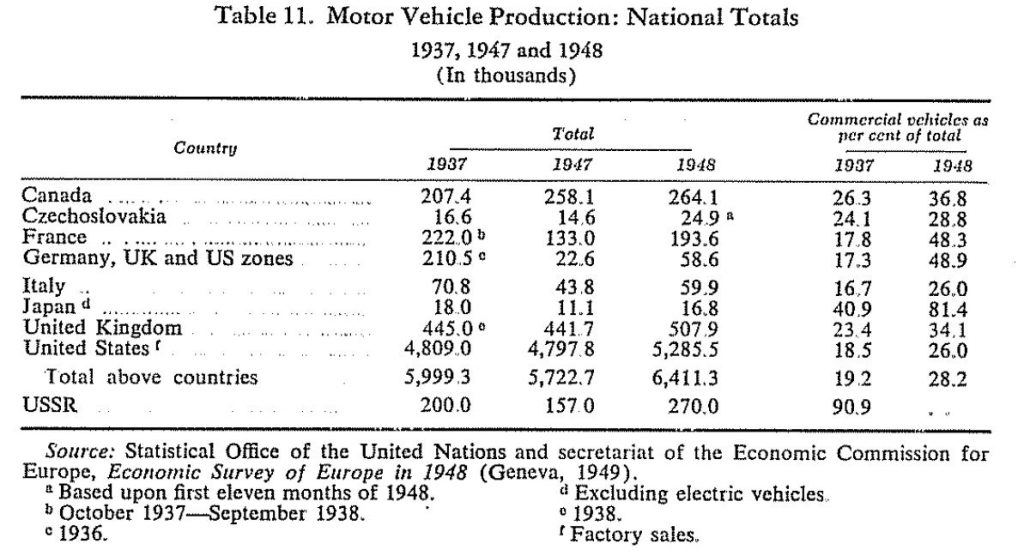Taps Coogan – December 7th, 2020
Enjoy The Sounding Line? Click here to subscribe for free.
The following chart, from UN World Economic Report of 1948, shows global crude steel production from 1937 through 1948.


In 1937, two years before the outbreak of World War II, the US was by and far the largest steel producer in the world (38% of production).
The US was also responsible for over 80% of global auto production in 1937.

Today, the US is responsible for less than 5% of global steel production and roughly 12% of automobile production.
According to a surprisingly detailed Department of Labor report from 1931, a structural iron worker in Baltimore made $1.65 an hour compared to just $0.19 for an equivalent worker in Rome, $0.25 in Paris, $0.35 in Berlin, and $0.38 in London. Similar ratios are detailed for other skilled labor jobs. In other words, a skilled laborer in the US earned anywhere from four to eight times as much as an equivalent worker in the next largest industrial economies of the time.
Today, the average US manufacturing wage is about $27 and hour compared to $6.50 an hour in China. The average manufacturing wage in India is barely $1 an hour.
Simply put, US wages were higher relative to the next largest industrial economies in 1930 than they are relative to China today. A similar ratio exists between China and India, yet China has a large trade surplus with India.
More than the difference in the cost of labor in the US versus other countries, what has really changed since the 1930s is how easy it is to exploit differences in labor costs. Some of that ease has come from technology: falling transportation costs and better tools for managing complicated supply chains. Some of that ease has come from decades of genuinely nonsensical trade, regulatory, and tax incentives.
Whatever the future holds, at least the US started to vigorously debate some of those incentives.
Would you like to be notified when we publish a new article on The Sounding Line? Click here to subscribe for free.


“at least the US started to vigorously debate some of those incentives”
Not any longer with Biden at the helm….it’s going to be back to the same old same old IMHO.
At the risk of sounding optimistic, people who ignore the political re-ordering of the last few years will do so at their own political peril.